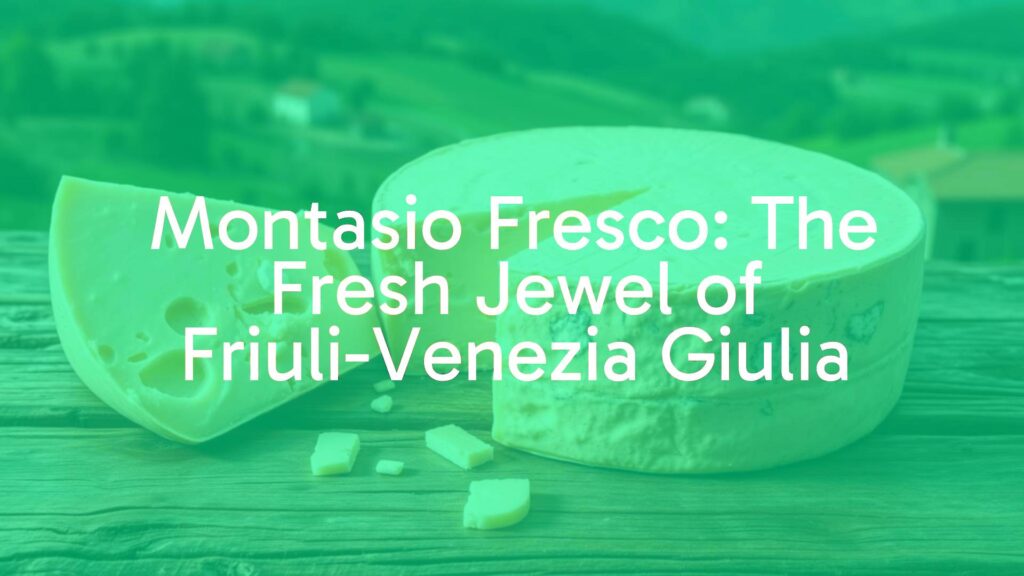Montasio Fresco: An Introduction
Montasio fresco is a distinguished Italian cow’s milk cheese originating from the picturesque regions of Friuli-Venezia Giulia and Veneto in northeastern Italy. This cheese stands out for its mild flavor, supple texture, and deep-rooted cultural significance. Known for its versatility and subtle yet captivating personality, Montasio fresco has established itself as both a cherished table cheese and an essential ingredient in regional Italian cuisine.
Key Characteristics
Montasio fresco celebrates its youth—literally, as “fresco” means “fresh” in Italian. Typically aged for just 2 to 3 months, it boasts a pale straw-yellow interior with tiny, well-dispersed holes. The texture is semi-soft, smooth, and creamy without being runny. Its flavor profile is gentle, with notes of milk, butter, and grass, often accompanied by a delicate acidity that makes it approachable and pleasing on the palate.
Historical Roots
The history of Montasio dates back to the 13th century, when monks in the Montasio massif developed techniques for cheese production that have endured through generations. Designated under Protected Designation of Origin (PDO) status since 1986, Montasio fresco’s production is strictly regulated to preserve the authentic methods and regional identity crucial to this cheese’s character. Its legacy reflects centuries-old agricultural traditions and communal efforts in cheese-making.
Traditional Craft and Production
Montasio fresco is made exclusively from high-quality local cow’s milk, often from breeds native to the Alps. The milk is typically partially skimmed and gently heated in copper cauldrons, which contributes to the cheese’s distinctive flavor and texture. While aged Montasio develops a firmer body and more pronounced taste, the fresco variety is intentionally enjoyed at its freshest. Wheels are carefully salted, pressed, and allowed to mature for a short period to maintain their signature mildness and yielding bite.
Regional Pairings and Enjoyment
In Friuli-Venezia Giulia and Veneto, Montasio fresco shines as a standalone delicacy—a simple wedge alongside rustic bread, cured meats, or fresh fruit like pears and apples. It is an integral part of local specialties, most notably in frico, a crispy or soft cheese pancake sometimes combined with potatoes or onions. Montasio fresco pairs effortlessly with young, fruity white wines such as Friulano, Pinot Grigio, or light reds from the surrounding terroir. Its mildness also complements regional honey, walnuts, and lightly pickled vegetables.
Cultural Significance and Serving Tips
Montasio fresco embodies the warmth of rural Italian hospitality and is often enjoyed during family gatherings, festive meals, and as a symbol of local pride. Traditionally, it is served at room temperature to fully appreciate its aromatic qualities and creamy mouthfeel. Slices or cubes make an inviting addition to antipasto platters, while gentle melting properties allow it to enrich polenta, baked vegetables, or pasta dishes as a topping or blended into fillings.
Variations and Distinctions
While Montasio fresco is celebrated for its fresh, buttery qualities, the cheese’s personality changes as it matures. Semi-stagionato (aged 4–10 months) and stagionato (over 10 months) versions develop a firmer, flakier structure and increasingly nutty, savory flavors. Nonetheless, the fresco form remains beloved for its delicate taste and universal appeal, serving as a gateway to the broader spectrum of Italian alpine cheeses.
Conclusion
Montasio fresco bridges history, craftsmanship, and contemporary Italian dining with its subtlety and versatility. Whether savored alone or incorporated into traditional dishes, it continues to captivate cheese lovers well beyond its native lands.

